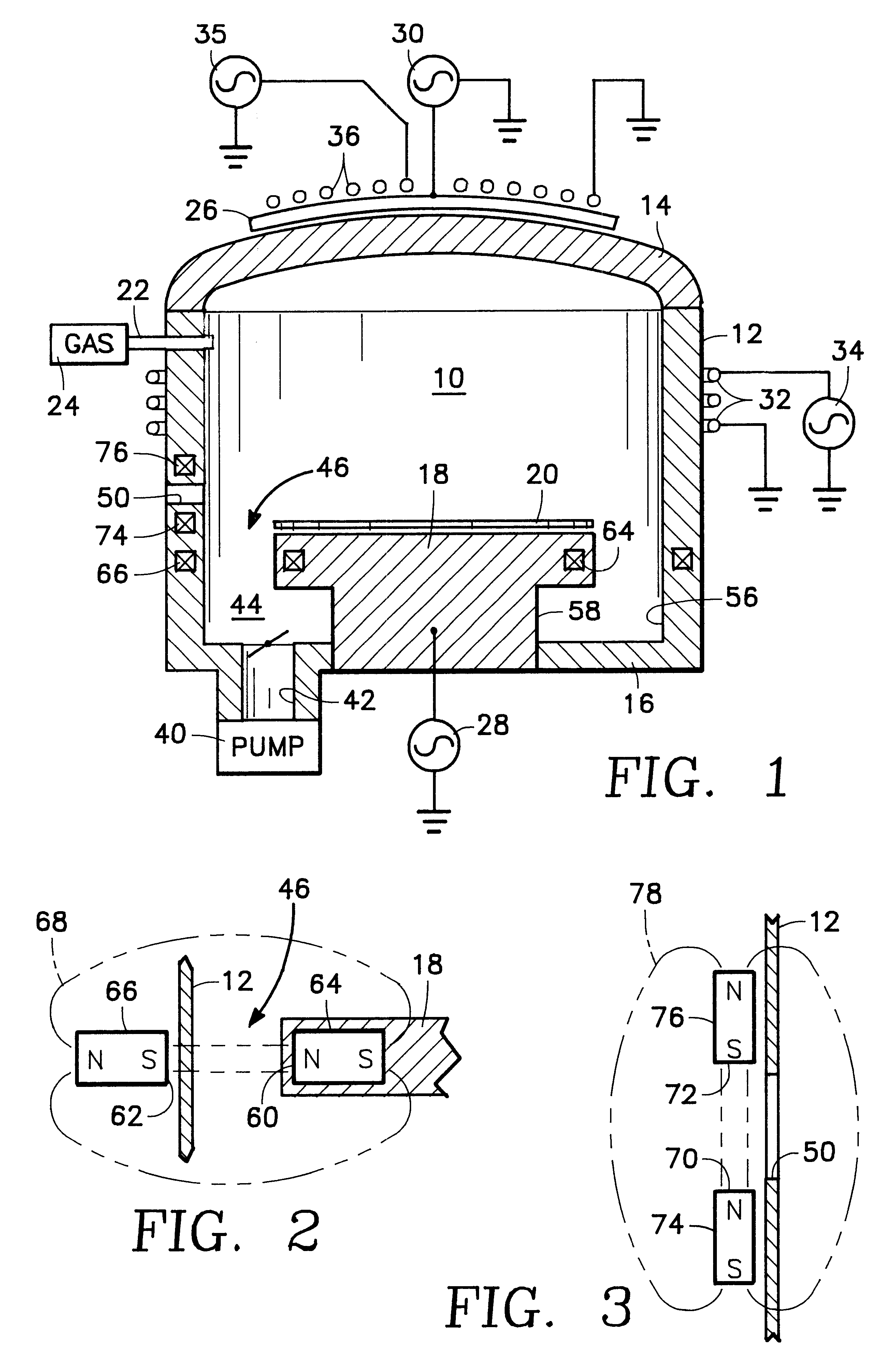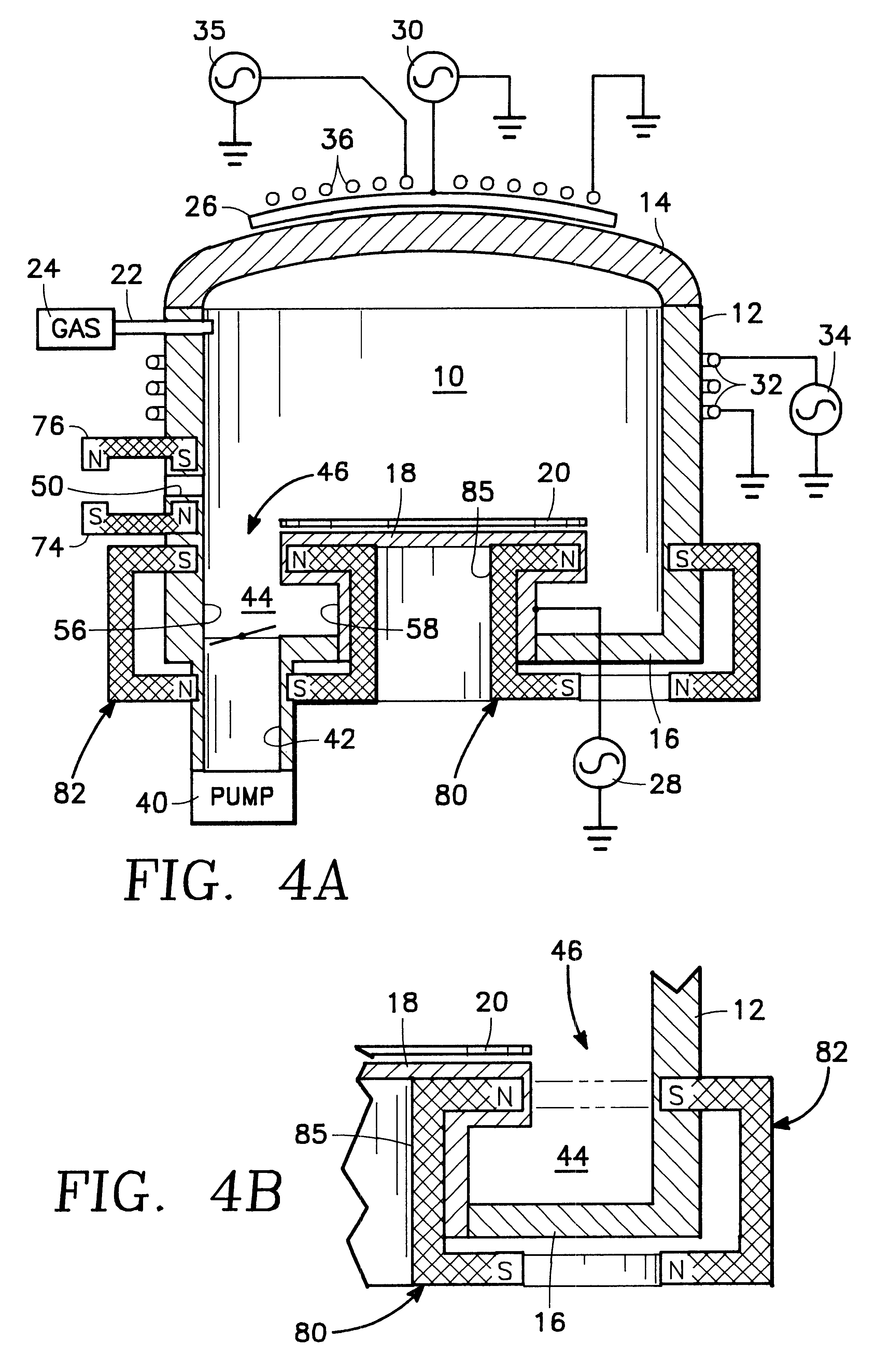Magnetically enhanced inductively coupled plasma reactor with magnetically confined plasma
a plasma reactor and magnetically enhanced technology, applied in the direction of plasma technique, chemical vapor deposition coating, coating, etc., can solve the problems of contaminating the process, destroying affecting the integrity of the process,
- Summary
- Abstract
- Description
- Claims
- Application Information
AI Technical Summary
Benefits of technology
Problems solved by technology
Method used
Image
Examples
Embodiment Construction
Conventional Reactor Elements
Referring to FIG. 1, an RF plasma reactor for processing a semiconductor wafer has a vacuum chamber 10 enclosed by a cylindrical side wall 12, a ceiling 14 and a floor 16. A wafer pedestal 18 supports a semiconductor wafer 20 which is to be processed. A plasma precursor gas is injected into the chamber 10 through a gas injector or inlet 22 from a gas supply 24. Plasma source power is coupled into the chamber 10 in any one of several ways. For example, the reactor may be a "diode" configuration, in which case RF power is applied across a ceiling electrode 26 and the wafer pedestal 18. This is accomplished by connecting the pedestal 18 and the ceiling electrode 26 to either one of two RF power sources 28, 30. Alternatively, a cylindrical side coil 32 wound around the chamber side wall 12 is connected to an RF power source 34. Alternatively to the foregoing, or in addition thereto, a top coil 36 is connected to an RF power supply. Although not shown in FIG....
PUM
| Property | Measurement | Unit |
|---|---|---|
| width | aaaaa | aaaaa |
| width | aaaaa | aaaaa |
| diameter | aaaaa | aaaaa |
Abstract
Description
Claims
Application Information
 Login to View More
Login to View More - R&D
- Intellectual Property
- Life Sciences
- Materials
- Tech Scout
- Unparalleled Data Quality
- Higher Quality Content
- 60% Fewer Hallucinations
Browse by: Latest US Patents, China's latest patents, Technical Efficacy Thesaurus, Application Domain, Technology Topic, Popular Technical Reports.
© 2025 PatSnap. All rights reserved.Legal|Privacy policy|Modern Slavery Act Transparency Statement|Sitemap|About US| Contact US: help@patsnap.com



